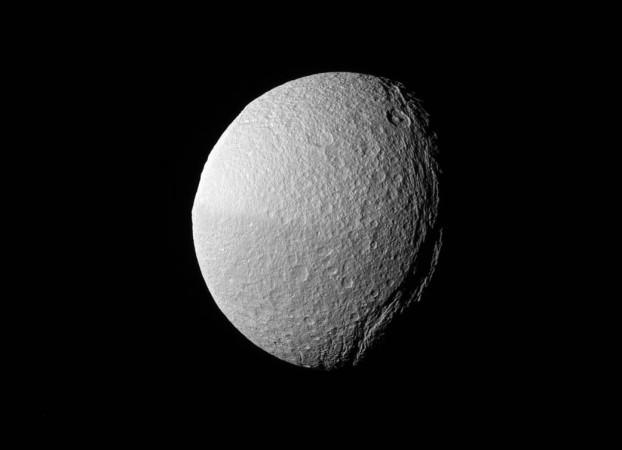
NASA's Cassini spacecraft captured a spectacular image of Saturn's mid-sized icy moon Tethys which portrays a giant canyon called Ithaca Chasma.
Also Read: NASA's Cassini bids final goodbye to Saturn's moon Titan; heads towards its Grand Finale
The canyon is around 100 kilometres (60 miles) wide and is as deep as four kilometres (2.4 miles). It spreads over 2,000 kilometres (approx 1243 miles) around the freezing surface of the icy moon.
The shape of this massive rift can be seen highlighted by the sun present over Tethys.
Another distinct feature that Tethys possesses is its Odysseus crater which is present at its upper left. This crater makes the moon appear like an eyeball but it is hardly visible, a NASA statement said.
Though NASA released this image on Monday, April 24, it was captured on January 30, 2017, by the Cassini spacecraft's narrow-angle camera with the image scale of two kilometres (1 mile) per pixel.
This photo was captured when Cassini was at a distance of around 356,000 kilometres (221,000 miles) from the icy moon.
Launched in 1994, the $3.2-billion worth Cassini-Huygens mission was a collaboration between NASA, European Space Agency (ESA) and Italian Space Agency ( Agenzia Spaziale Italiana; ASI). Cassini had reached the Saturn system in July 2004 and has been exploring Saturn and its moons for almost past 20 years.
The spacecraft is nearing its Grand Finale that would mark the end of the mission. The spacecraft will be plunging into Saturn's atmosphere through a controlled fall on September 15, 2017, as revealed by NASA.








